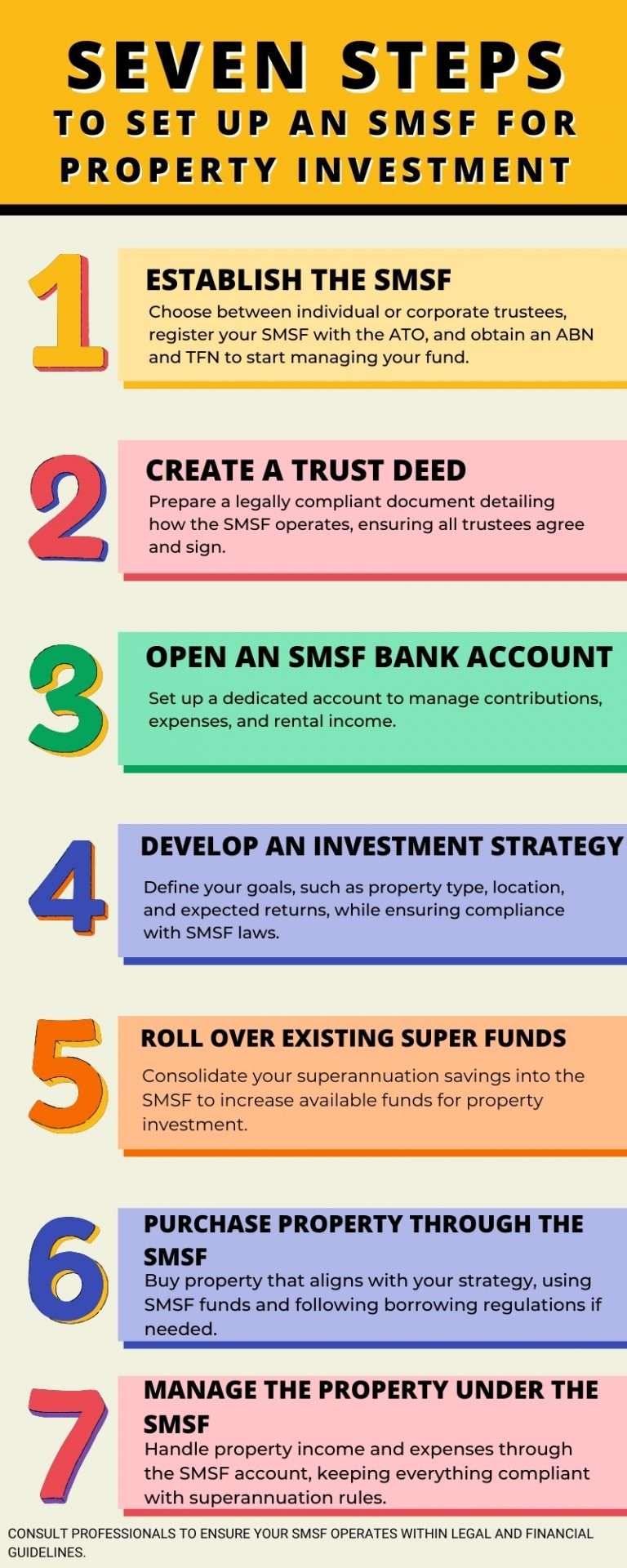How to Buy Investment Property with Your Superannuation in Australia
Superannuation is a crucial part of retirement planning in Australia. It’s a long-term savings strategy designed to provide financial security in your golden years.
But did you know your superannuation can do more than just sit and accumulate?
One strategy gaining popularity is using superannuation to invest in property. This approach can potentially offer significant tax advantages and diversify your retirement portfolio.
However, buying investment property with super isn’t a simple process. It involves navigating complex legal and financial landscapes, understanding the role of self-managed super funds (SMSFs), and assessing potential risks.
This guide aims to demystify the process. We’ll explore how to buy investment property with your superannuation in Australia, covering everything from setting up an SMSF to managing your investment.
Whether you’re a seasoned investor or just starting, this guide will provide valuable insights to help you make informed decisions.
Also Check Out: Our Top House & Land Packages
Understanding Superannuation and Property Investment in Australia
Superannuation is a mandatory system in Australia designed to help individuals save for retirement. Employers contribute to super funds on behalf of their employees, building a nest egg over time.
This system is not just a standard savings account. Instead, superannuation funds invest in various assets to grow your retirement savings. These investments can include stocks, bonds, and property.
Property investment has become an appealing option within superannuation for many Australians. It provides the potential for capital growth and rental income while enjoying certain tax benefits.
To make the most of property investment through superannuation, it’s essential to understand some key points:
- Superannuation funds can invest in property, but direct property investment usually requires an SMSF.
- The investment must align with the sole purpose test, meaning it should support your retirement savings goal.
- Australian Taxation Office (ATO) regulations must be followed to remain compliant.
Understanding these elements is crucial for anyone considering property investment in their superannuation strategy. This approach can help diversify your portfolio, potentially increasing your retirement income. However, it’s important to navigate this landscape with care and knowledge to maximize benefits while minimizing risks.
The Role of Self-Managed Super Funds (SMSFs) in Property Investment
Self-managed super funds (SMSFs) are a popular way to invest in property using superannuation in Australia. They offer more control over investment choices compared to traditional super funds.
With an SMSF, the trustees take charge, allowing direct investment in residential and commercial properties. This flexibility is a key advantage of SMSFs for property investment strategies.
Setting up an SMSF requires careful planning and understanding of legal obligations. Trustees are responsible for complying with superannuation laws and managing the SMSF’s assets prudently.
The benefits of SMSF property investment extend beyond mere control. Tax advantages may include lower tax rates and potential capital gains tax concessions when the fund is in pension phase.
However, managing an SMSF involves responsibilities. Trustees must follow rules such as the sole purpose test, ensuring the investment solely supports retirement benefits. Understanding these rules is vital for successful property investment through an SMSF.
Property investments in an SMSF must be managed wisely. This means staying compliant with regulations and ensuring proper fund administration. With the right strategy, an SMSF can effectively leverage property investment to bolster retirement savings.
Legal Considerations for SMSF Property Investment
Investing in property through an SMSF involves legal complexities. Understanding these is crucial to avoid penalties or breaches. Compliance with the Australian Taxation Office (ATO) regulations is mandatory.
Before buying a property, ensure it meets the ‘sole purpose test’. This means the investment must solely focus on providing retirement benefits to the fund members. Misuse of the property for personal gain could result in severe penalties.
Legal Requirements Include:
- Property should not be purchased from a related party of SMSF members.
- It must not be lived in or rented by fund members or related parties.
- The property cannot be acquired from a disqualified person.
Leveraging is another factor to consider. Borrowing within SMSFs is allowed under strict conditions, following a limited recourse borrowing arrangement (LRBA). This helps protect the fund’s other assets.
Finally, professional advice is critical when dealing with legal aspects. Engaging with legal and financial experts can ensure compliance and help navigate the complexities of SMSF property investment laws.
Benefits of Using Superannuation for Property Investment
One major benefit of using superannuation for property investment is tax efficiency. Property investments within an SMSF offer significant tax advantages compared to personal investments.
During the accumulation phase, rental income from a property is taxed at a concessional rate. This rate is typically lower than personal income tax rates, providing considerable savings. Once in the pension phase, this income might even become tax-free, increasing the investment’s appeal.
Superannuation funds can also enhance purchasing power through pooling. By combining resources with other members, SMSFs can access high-value properties that might be out of reach individually. This collective approach can amplify investment returns.
Additionally, investing through superannuation allows diversification within an SMSF. It provides the opportunity to balance property investment with other asset classes, such as shares and bonds. This strategy can help mitigate risks and stabilize the fund’s overall performance.
Finally, property investment can hedge against inflation. Real estate often appreciates over time, potentially preserving and growing retirement savings. This makes it a valuable component of a long-term financial strategy.
Risks and Downsides of Property Investment within Superannuation
Investing in property through superannuation carries inherent risks. For starters, real estate markets can be volatile. Property values may fluctuate due to economic factors, affecting the overall return on investment.
Liquidity is another concern with property investments. Real estate is not as easily sold as shares or bonds, which can pose challenges if quick fund access is needed. This could impact the SMSF’s ability to meet other financial obligations.
There are also costs involved in maintaining an investment property. Ongoing expenses such as maintenance, repairs, and property management fees can eat into profits. These must be factored into the investment decision to ensure financial viability.
Regulatory compliance is also a critical aspect. Failure to adhere to strict superannuation and SMSF regulations may result in penalties. This risk demands careful management and ongoing oversight to ensure continued compliance.
Lastly, investing in property may lead to a lack of diversification. Overcommitting to real estate within a superannuation fund can increase exposure to sector-specific risks. Balancing the investment portfolio is essential for risk management and financial stability.
How to Set Up an SMSF for Property Investment
Setting up a Self-Managed Super Fund (SMSF) to invest in property involves several steps. First, decide if managing an SMSF suits your skills and commitment level. It’s essential to understand that running an SMSF involves significant responsibilities.
Next, choose the right trusteeship structure. You can opt for individual trustees or a corporate trustee. Each has its pros and cons, so consider your long-term management strategy.
Steps to Establish an SMSF
- Select Trustees: Opt for either individual trustees or a corporate trustee.
- Create a Trust and Trust Deed: Legally establish the SMSF through these documents.
- Register the SMSF: Obtain an Australian Business Number (ABN) and a Tax File Number (TFN).
- Open a Bank Account: Create a dedicated account for the SMSF transactions.
- Set Investment Strategy: Align this strategy with compliance rules and objectives.
It’s critical to create a trust and trust deed for the SMSF. These documents establish the fund’s operation and guide how it will be managed. Ensure they comply with relevant legal frameworks.
After the paperwork, register your SMSF with the Australian Taxation Office (ATO). This includes obtaining an Australian Business Number (ABN) and a Tax File Number (TFN) for the fund. This step ensures regulatory compliance.

Financing Property Investment with Superannuation Funds
Acquiring property using superannuation funds requires a clear understanding of financing options. Traditional bank loans won’t suffice for SMSF property purchases. Instead, you’ll need a loan that complies with strict rules.
Limited Recourse Borrowing Arrangements (LRBAs) are the preferred loan structure. They protect your other SMSF assets if the property-related loan defaults. These loans offer a layer of security for trustees.
When exploring LRBAs, consult various lenders to compare interest rates and terms. Terms can vary, influencing both cash flow and long-term strategy. Choose a lender experienced in SMSF properties.
Key Financing Considerations
- Loan Structure: Opt for Limited Recourse Borrowing Arrangements.
- Cash Flow Impact: Plan for repayment capacity.
- Loan Terms: Evaluate the interest rate and loan conditions.
- Professional Advice: Consult financial advisers familiar with SMSF rules.
Evaluate how the loan impacts your fund’s cash flow. With property investments, ensuring the SMSF can handle repayments without straining resources is crucial. Always align financing with your SMSF’s overarching goals.
Seek financial and legal advice to navigate these complexities. Expert guidance helps in securing favorable terms and maintaining compliance with SMSF regulations.
The Importance of Diversification and the ‘Sole Purpose Test’
Diversification is critical in building a robust superannuation portfolio. Spreading your investments helps mitigate risks associated with market fluctuations. Property can be a part of this strategy.
The ‘sole purpose test’ dictates that SMSF assets serve to provide retirement benefits. This rule ensures all investments align with retirement goals. It’s a principle that balances growth with compliance.
Property investment within an SMSF must not compromise diversification. While potentially lucrative, focus on integrating property sensibly among other assets. This approach helps maintain the fund’s overall financial health.
Managing Your Investment Property within an SMSF
Effective management of your investment property within an SMSF is essential. Proper management ensures the property remains a viable asset for your retirement. This involves several considerations beyond just purchase and sale.
Regularly reviewing the property’s performance is crucial. This means assessing rental yields, capital growth, and market conditions. Monitoring these factors helps in making informed decisions about the property’s future.
Engaging a professional property manager is advisable. They can handle tenant issues, maintenance, and day-to-day management. This professional guidance can streamline operations and preserve the property’s value.
Compliance with SMSF regulations is non-negotiable. All property management activities must align with superannuation rules. Any violation can result in penalties that harm the fund’s performance.
Lastly, ensure adequate insurance coverage for the property. Comprehensive insurance protects against unforeseen events and liabilities. It’s a cornerstone of safeguarding your investment against potential risks.
Compliance, Insurance, and Protection for Your Investment
Staying compliant with regulations is vital for SMSF property investments. The Australian Taxation Office (ATO) has strict rules. Non-compliance can lead to severe penalties and affect your retirement savings.
Insurance is a critical safeguard for your investment property. It provides coverage against damage, theft, and liability risks. Ensuring comprehensive protection keeps your SMSF assets secure.
Consider professional advice for both compliance and insurance needs. Experts can help navigate complex requirements. This ensures that your investment remains protected and adheres to all necessary regulations.
Conclusion: Is Property Investment with Super Right for You?
Investing in property through superannuation offers unique advantages. These benefits include potential tax savings and diversified retirement strategies. However, it’s essential to evaluate the risks involved.
Consider your financial situation and retirement goals. Property investment isn’t suitable for everyone. It requires careful planning and a long-term commitment.
Professional advice is invaluable in making informed decisions. Experts can help assess your investment strategy’s alignment with retirement objectives. Ultimately, choose a path that best supports your financial future.








